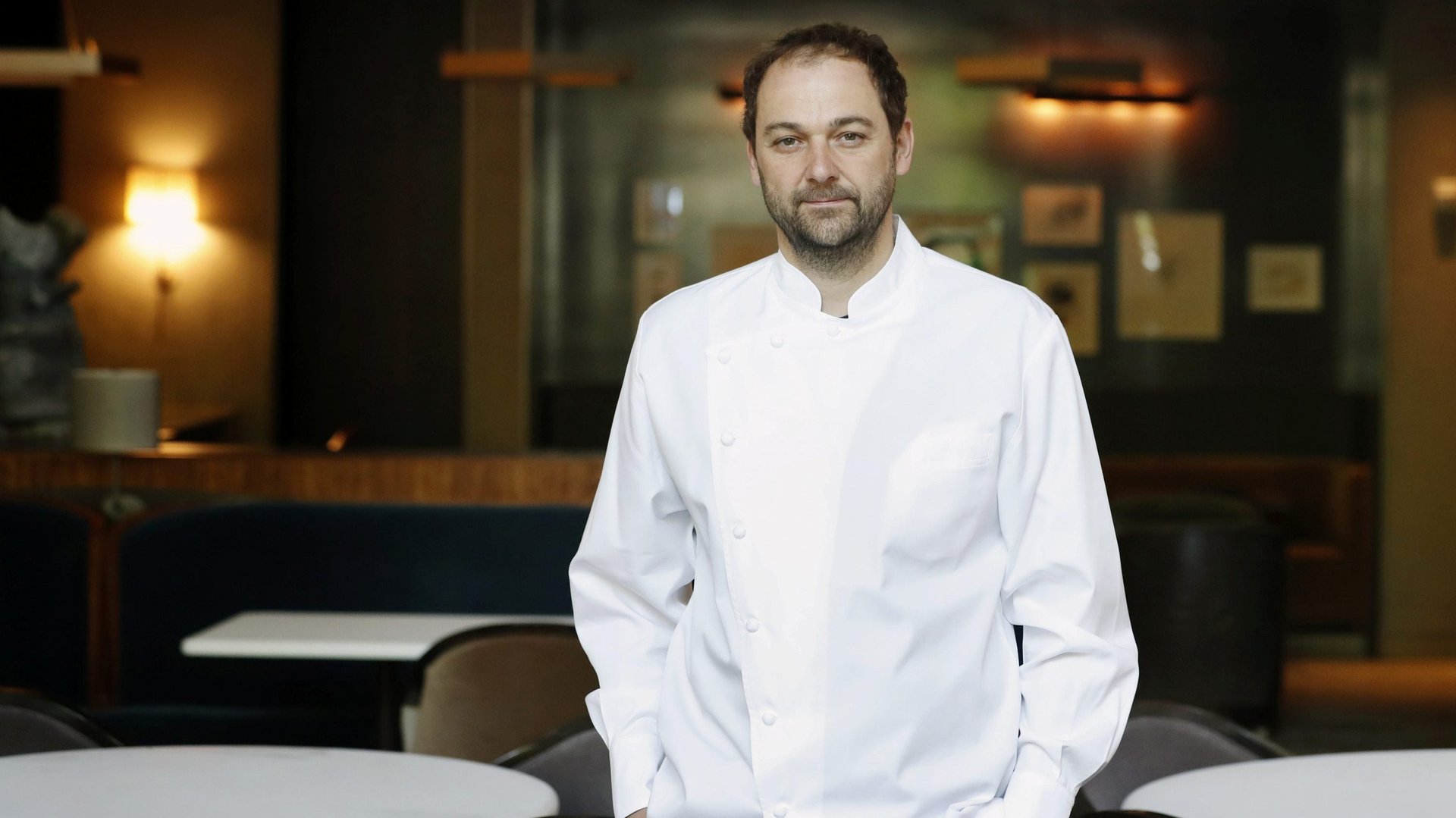Eleven Madison’s all-vegan menu was motivated by more than climate concerns
A clay vase cracked open to reveal its treasure: a smoky beet, roasted for 16 hours to accentuate its deep flavor. Amaranth seed and sweet peas. Fermented almond milk, alchemized into a new form of crème fraîche.


A clay vase cracked open to reveal its treasure: a smoky beet, roasted for 16 hours to accentuate its deep flavor. Amaranth seed and sweet peas. Fermented almond milk, alchemized into a new form of crème fraîche.
These are among the creative offerings that will be featured on Eleven Madison Park’s newly meat-free $335 tasting menu when the New York City restaurant, shuttered during the pandemic, reopens on June 10.
Owner and chief Daniel Humm’s surprising pivot from traditional gourmet stand-bys like roast duck and lobster to meditations on sweet peas has set the culinary world abuzz. Eleven Madison, which boasts three Michelin stars, isn’t the only fine-dining establishment to elevate vegetables to center stage. But its world-renowned status means the change is being hailed as a big win for those invested in a public shift toward more environmentally friendly eating habits.
“Our practices of animal production, what we’re doing to the oceans, the amount we consume: It is not sustainable,” Humm told the Wall Street Journal. “If Eleven Madison Park is truly at the forefront of dining and culinary innovation, to me it’s crystal clear that this is the only place to go next.”
One overlooked part of the story, however, is that environmental concerns weren’t the only reason behind Humm’s decision. He apparently also was growing bored with his job, and needed to invent a new challenge for himself.
“I didn’t want to do the same thing for another 20 years,” Humm told Bloomberg. “I look at this restaurant through these glass refrigerators that we have in our kitchen, how iconic that picture of the dry aging duck was.” (You can check out a video all about the restaurant’s most famous dish here.) “I was thinking, it can’t go back to those hanging ducks. It has to be something else.”
“A piece of fish, meat, there aren’t that many different ways to prepare them,” he continued. “If you have a beet, an eggplant, the opportunities feel endless.”
How to reinvent your job
Anyone who’s found themselves in a similar same-old, same-old rut at their job might do well to take a page from Humm. Sometimes the solution isn’t to get a new job, but to reinvent the one you already have.
Adding constraints—such as creating a vegan menu that foodies will deem worthy of a $335 price tag—is one way to do that. “When there are no constraints on the creative process, complacency sets in, and people follow what psychologists call the path-of-least-resistance – they go for the most intuitive idea that comes to mind rather than investing in the development of better ideas,” researchers Oguz A. Acar, Murat Tarakci, and Daan van Knippenberg explain in the Harvard Business Review. This is why some poets find adhering to a sonnet structure more liberating than free verse, or why—to use one of the researcher’s examples—GE Healthcare engineers thrived when tasked with the mission of creating a low-cost, portable, battery-operated yet state-of-the-art electrocardiograph for rural communities.
Another option is to engage in the art of job-crafting—a term that describes how employees alter their jobs so that their roles are better suited to their strengths and interests. Job-crafting, a theory established by researchers Amy Wrzesniewski and Jane Dutton back in 2001, is a way for workers to empower themselves, learn new skills, and become more engaged with their jobs. For example, in a 2008 paper authored by Wrzesniewski and Dutton as well as consultant Justin M. Berg, a marketing coordinator interviewed by the researchers explains, “I take on as much event planning as I can, even though it wasn’t originally part of my job. I do it because I enjoy it, and I’m good at it. I have become the go-to person for event planning, and I like my job much more because of it.”
The 2008 paper outlines three kinds of job crafting. The first involves changing the “number, type, or nature of tasks” in a job: A teacher who loves music, for example, might start delivering their lessons in the form of songs. The second category involves changing interactions with others, like a salesperson who prides themselves on taking new employees under their wing. The third category is changing how you perceive your job. Wrzesniewski’s research on custodial workers, for example, found that hospital janitors who saw their work as a way to support patients were far happier at their jobs than those who envisioned their roles as simply cleaning up.
Of course, sometimes the best way to get a creative second wind may indeed be to switch jobs, or even pursue a new career. But Humm’s example is a reminder that when you’re hungry for change, sometimes the best thing to do, besides cooking up some vegetables, is to make your job a little bit harder for yourself.